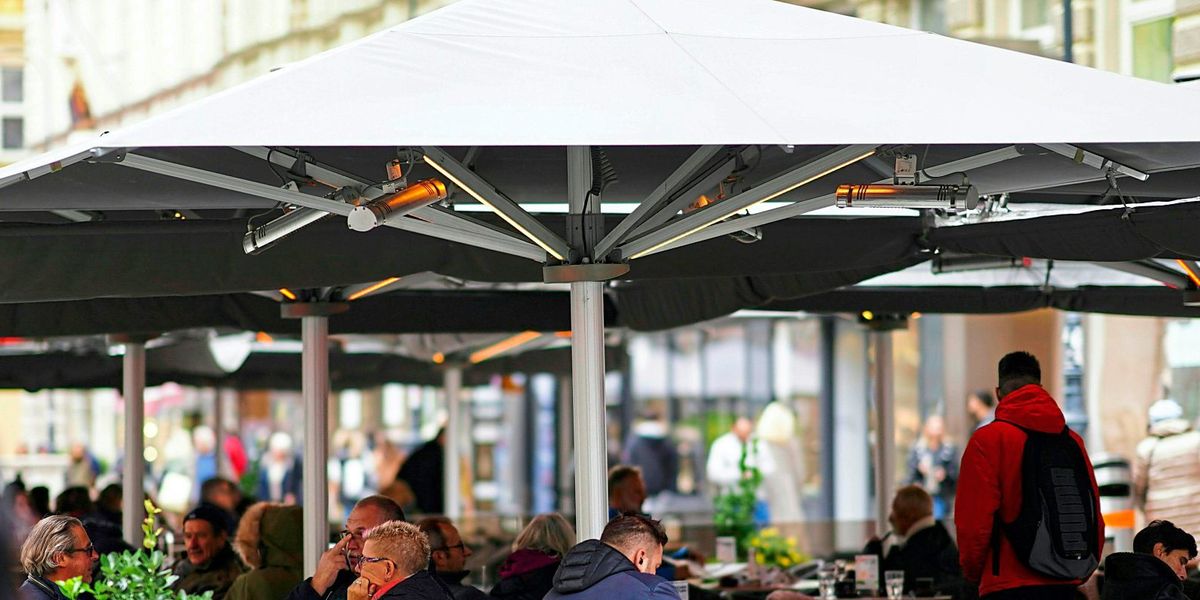He often uses an example in his presentations. It shows a map of North Africa and on it a small black cube that looks like a fly that has landed on the monitor. That cube represents an area with solar collectors capable of covering the annual electricity consumption of the whole of Europe.
In an interview for Euractiv.cz he claims Diego Martínez Plaza, coordinator of the EU’s Solaris European research infrastructure. EU Solaris offers scientists and industry representatives cutting-edge technology for concentrated solar energy. The interview took place on the occasion of the ICRI 2022 International Conference on Research Infrastructures.
The EU Solaris research infrastructure is dedicated to concentrated solar power (CSP) systems. How do these systems work?
It has nothing to do with photovoltaics or domestic water heating, because the system works at high temperatures. How do we get them? With the help of mirrors we concentrate the solar radiation in one point, which allows us to generate steam with a temperature of 500 ° C. We use it to power the classic electricity generation turbines we know from fossil power plants. This is how solar thermal energy has been used for many years, but now we see other possibilities for use in other industrial processes. For example, we are developing green hydrogen production, which is now “trendy”. And we find that hydrogen can be produced very efficiently with solar thermal energy.
And hydrogen can also act as a repository for the energy produced, right?
Yes. We can use it to store energy or we can send it further, for example to cars. It has many possible uses.
When working with solar energy, we can face a problem that even large photovoltaic parks encounter. Some days the sun doesn’t shine. Is it a problem for CSP too or have you found a solution?
It is actually our advantage. We can store energy in liquid salts and then generate electricity from it at virtually any time, day and night. And not only for salts, but also for other chemicals.
Can the technology also be used by heavy industries whose electrification is too demanding or even impossible? We have a problem with this in the Czech Republic, for example …
An important condition is that you need a sunny spot. This is just a fact. If you have enough sun and space, it might work. In Spain we already have a project with the ceramic industry association, because different temperatures up to 800 ° C are required to produce ceramics. We are working with them to provide them with a solution. And there are also opportunities for the steel and chemical industries.
Does this mean that the technology is more suitable for southern European countries?
Of course, the more sun you have, the better. But the industry can develop anywhere. One such country is Germany. However, the natural place for these resources are areas such as Africa, Australia and South America, but also China and the Mediterranean. However, global warming is a global problem. So, if you avoid the construction of a coal-fired power plant, for example in Algeria, you will help the whole world.
Do you collaborate in any way with Africa? After all, its northern part is close to Europe and there are deserts, which are apparently the perfect place for such technologies.
Yes, we have been working together for some time. Moroccan, Algerian and Egyptian institutes are already developing projects and have functioning power plants. A huge complex arises, for example, in Morocco.
How long have concentrated solar energy systems been around?
The first initiatives appear already in the seventies during the first oil crisis. So it’s more a question of market development than anything else. When the price of oil went up, everyone started looking to solar technology. And when the price went down, everyone forgot about it again. Photovoltaics succeeded despite this and we are happy about it. With photovoltaics, however, there is a problem with energy storage, which is possible but more expensive. In addition, you need a technology that allows you to stabilize the electricity grid. There is a good chance that CSP systems can help with this. The need to isolate ourselves from dependence on Russian resources is a great opportunity for us, but unfortunately it is occurring in unfortunate circumstances.
How big is the potential of these technologies?
I often use an example in my presentations. I show a map of North Africa and there is a small black cube on it, it looks like a fly sitting on the monitor. That cube represents an area with solar collectors capable of covering the annual electricity consumption of the whole of Europe. So we are talking about those dimensions.
Do we have any work projects in Europe?
In terms of research and development, we are a small community that has been working on solar energy development projects for many years. As for commercial projects, a call for the installation of 200 megawatts of concentrated solar power has just been launched in Spain, the results of which are expected to be published shortly.
Does Spain have the ambition to become a leader in this technology?
In Europe for sure. And it is not just because our facility is located there, that it has just been “promoted” to the European Research Infrastructure Consortium (ERIC). France, Germany, Cyprus, Italy and Portugal also have strong institutions. We are definitely not the only ones.
Congratulations on having obtained the status of a European Consortium. What does this mean for you in practice?
We are now in the first league of European research infrastructures, we have become members of a very exclusive club. And the European Commission will obviously be watching us more now, so we can’t disappoint.
You have to meet the expectations the EU places on you.
Yes, it is a great responsibility.
And what are the plans for the next few years?
We must first consolidate as a consortium. There are several institutes, we know each other, but each one does something a little different. We will now work as one, but everyone must have some degree of freedom. We need to come together and find synergies.
And then we have to make CSP a commodity. Today, if you want to install photovoltaics on your roof, you go to a shop, buy the panels and you can install them. Here it is different, we need huge spaces to be efficient. These are large structures in the middle of deserts or industrial parks. For example, Heineken is building a large CSP power plant, from which it intends to supply power to its brewing plant near Seville, Spain. Sure, there are a lot of jokes about it, it’s beer after all, but a 30 megawatt project that powers a real factory is a great example of how CSP can be used.
I assume that such projects must be very expensive from a financial point of view …
Yes, it’s a bit of a chicken and egg story anyway. If we no longer build power plants, the price does not go down. Spain got off to a good start at the turn of the century, but subsidies were eventually canceled and the planned power plants were not built. But they grow in China, Chile, the United States and South Africa. But they are still few. To bring the price of a certain technology down, we need more power plants around the world.
Do you think more money could start flowing to you from the European budget?
Let’s say it’s something like Christmas. We are still waiting for it.
The article was published on the site Euractiv.cz.


